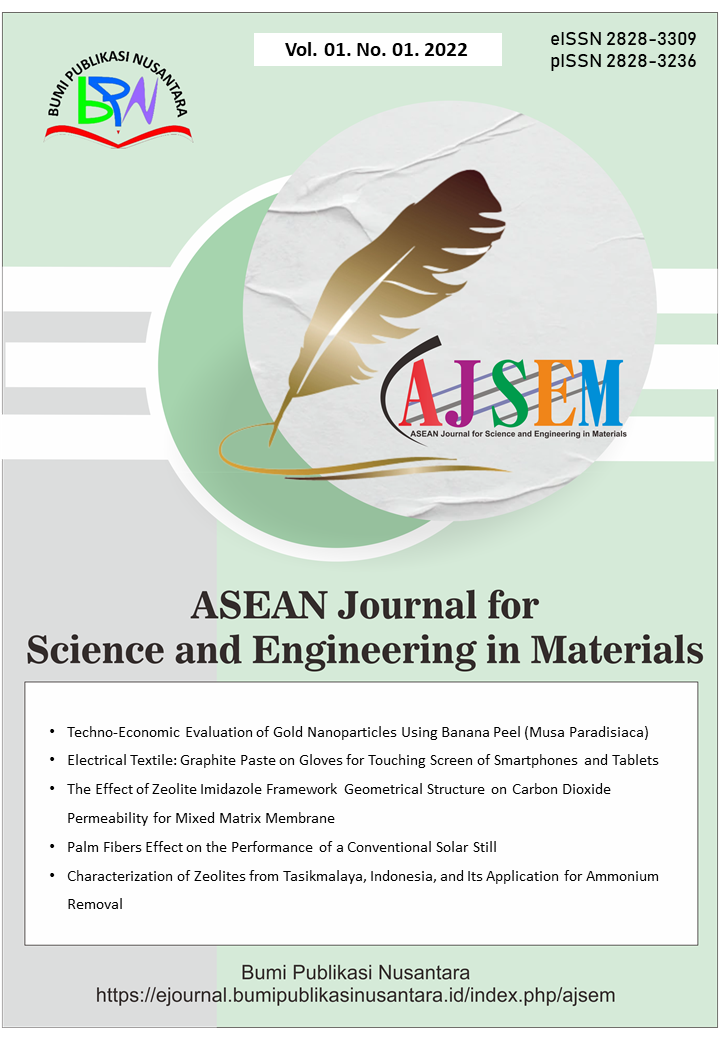Liquid Desiccant-assisted Dehydration of Bio-based Oligomers
 ), Wan Nur Fatihah Wan Muhammad Zulkifli(2), Tuan Noor Maznee Tuan Ismail(3), Zafarizal Aldrin Azizul Hasan(4),
), Wan Nur Fatihah Wan Muhammad Zulkifli(2), Tuan Noor Maznee Tuan Ismail(3), Zafarizal Aldrin Azizul Hasan(4),
(1) Malaysian Palm Oil Board
(2) Malaysian Palm Oil Board
(3) Malaysian Palm Oil Board
(4) Malaysian Palm Oil Board
 Corresponding Author
Corresponding Author
Abstract
Keywords
References
Bhikuning, A., and Senda, J.S. (2020). The properties of fuel and characterization of functional groups in biodiesel-water emulsions from waste cooking oil and its blends. Indonesian Journal of Science and Technology, 5(1), 95-108.
Ebulue, M.M. (2025). Comparative fatty acid profiling and nutritional assessment of groundnut and cashew nut oils. ASEAN Journal for Science and Engineering in Materials, 4(2), 159-168.
Ebulue, M.M., and Ebulue, C.S. (2022). Physicochemical properties of soil ecosystem polluted with spent engine oil. ASEAN Journal for Science and Engineering in Materials, 1(2), 59-66.
Kontogeorgis, G. M., Michelsen, M. L., Folas, G. K., Derawi, S., von Solms, N., and Stenby, E. H. (2006). Ten years with the CPA (Cubic-Plus-Association) equation of state. Part 1. Pure compounds and self-associating systems. Industrial and Engineering Chemistry Research, 45(14), 4855–4868.
Kontogeorgis, G. M., Voutsas, E. C., Yakoumis, I. V., and Tassios, D. P. (1996). An equation of state for associating fluids. Industrial and Engineering Chemistry Research, 35(11), 4310–4318.
Lao, G.M., Dasmariñas, H.A.Q., Nangcas, J.M.M., Luna, M.M., Perocho, S.N.S., Valdez, A., and Fegarido, J.E. (2022). Citronella (Cymbopogon Nardus) and peppermint (Mentha x Piperita) oil extracts as ant-repelling spray. ASEAN Journal of Agricultural and Food Engineering, 2(1), 33-38.
Munir, B., and Wu, L. (2024). A two-dimensional numerical study on the coalescence of viscous double emulsion droplets in a constricted capillary tube. Physics of Fluids, 36(3), 083341.
Article Metrics
Abstract View : 0 times
: 0 times Download : 0 times
Download : 0 times
Refbacks
- There are currently no refbacks.
Copyright (c) 2025 Bumi Publikasi Nusantara

This work is licensed under a Creative Commons Attribution-ShareAlike 4.0 International License.









